Undoubtedly, the most splendid tree in the garden is one I rarely mention or photograph. While most trees with pendulous branching are modest in size, the weeping beech (Fagus sylvatica ‘Pendula’, below) is enormous, covering a wide swath along the northern border. I was, unfortunately, short sighted in planting fringetrees (Chionanthus virginicus), a redbud (Cercis canadensis ‘Silver Cloud’), and a golden cypress (Chamaecyparis obtusa ‘Crippsii’) to its front so the beech can not be seen in its full glory, though it towers above all, and with a recently opened window when the redbud was removed several years ago. It deserves a front row seat, though with its slow early growth the beech was slow earning such a distinction.
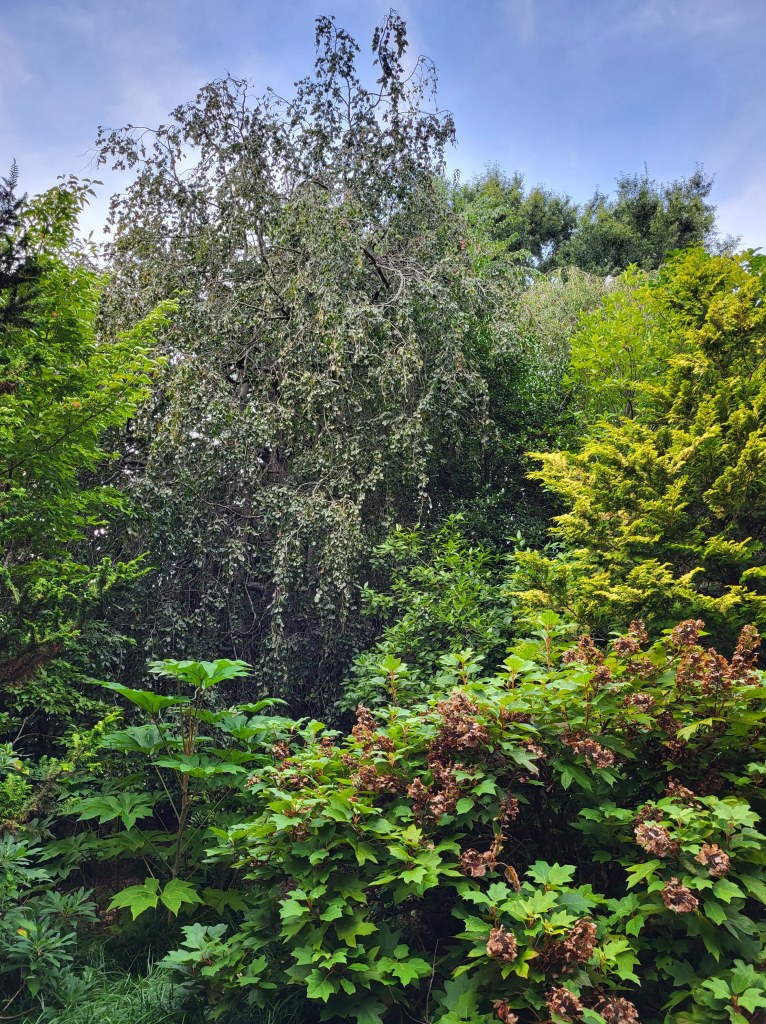
The weeping beech’s contorted branches do not arch to the ground gracefully, but with bends and zigzags (below) that are best appreciated after leaves have fallen. Every year I think how marvelous this tree would have been to climb when I was a youngster, and unfortunately it was too small while our kids were growing up. For years, I’ve considered planting the more narrowly pendulous, purple leafed, weeping beech (‘Purple Fountain’), but never pinned down the right spot. It is equally marvelous, but the purple leafed beech does not require so much area.

The largest of the garden’s woody plant collections are the Japanese maples (Acer palmatum and others. There are now more fern varieties than maples, but of course they are smaller and not as obvious). While maples with pendulous branching are most common, these are a minority with only five weepers out of nearly forty maples in the garden. Simply, the weepers take up space, and the differences between weeping varieties is not as clear as it is in upright growing types. With many more acres, I would plant many more weeping maples.
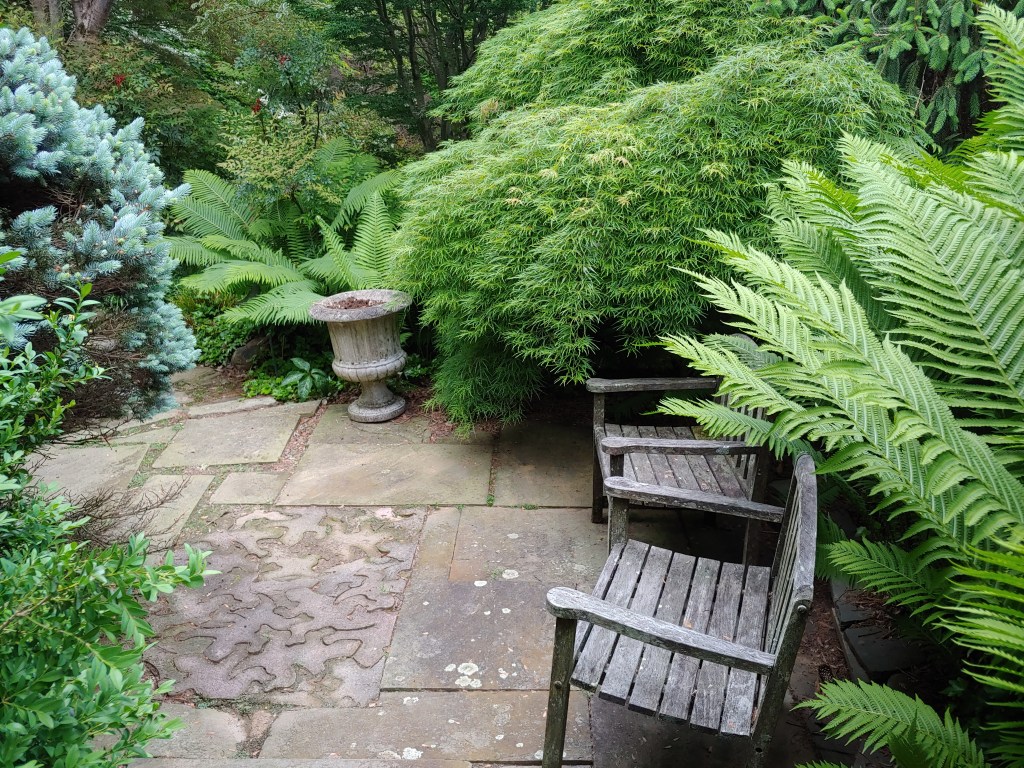
In the midst of a major redo of the planting beside the upper circular patio, Barbara mentioned that since we have cleared away the spruce and boxwood that obstructed a large portion of the patio, perhaps I should prune back the weeping green Japanese maple that arches over the far side. NO, No, no. It stays as is. Pruning weeping maples is difficult without losing their graceful form, and I have no plans to chance it with this beauty that spreads a dozen feet or more.
Regretfully, one red leafed weeping maple is nearly lost in the jumble surrounding the koi pond, but there it will stay and perhaps one day I’ll be motivated to clear out around it. Probably not, though it is also a maple of considerable spread.

Two weeping spruce could hardly be more different than a weeping Norway spruce (Picea abies ‘Pendula’) that skyrockets thirty feet upward (but with pendulous branches) and the mostly knee high but wide spreading ‘Acrocona’ spruce. While the tall Norway is obscured by other evergreens, the red cones at the branch tips of ‘Acrocona’ stand out along the path below the koi pond.
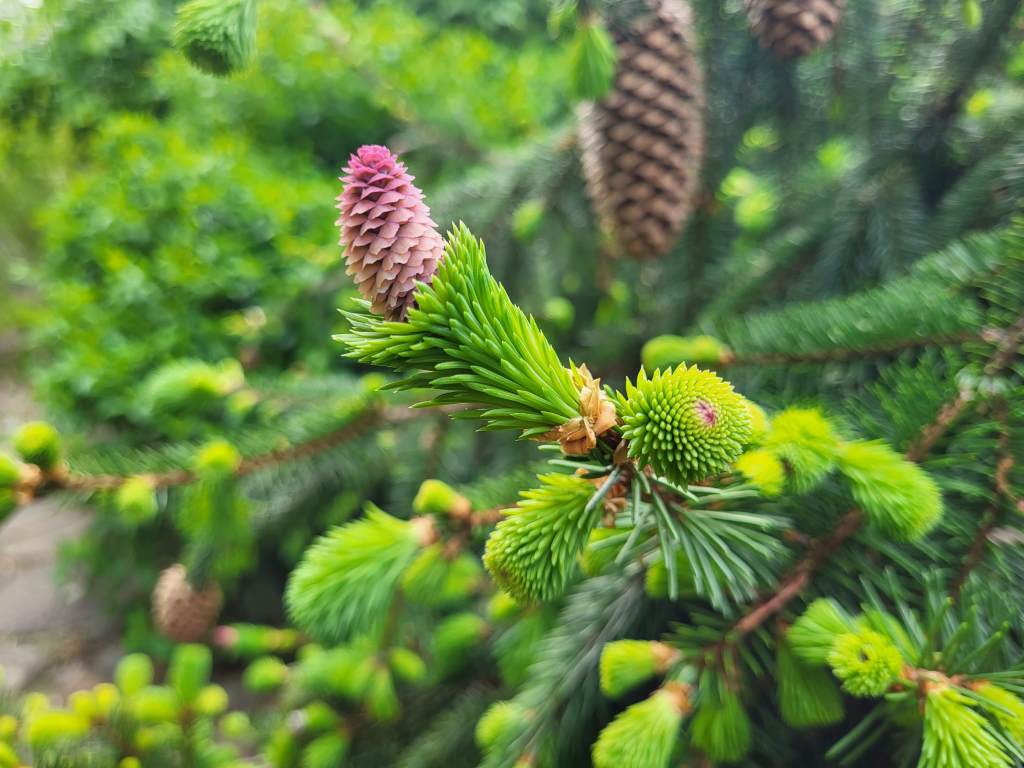
Just off the property along its western corner are two towering Dawn redwoods (Metasequoia glyptostroboides) planted years ago by the builder who employed a renowned, local landscape architect. I refused his services, intending to design my personal disaster, but I love the borrowed view of the trees. Inevitably, the sight of the ‘Falling Waters’ bald cypress (Taxodium distichum ‘Falling Waters’, below) leads to the discussion of how to tell upright growing trees of one from the other. The distinction is clear, though I must play a word game to recall that leaves of the Dawn redwood are opposite a branches while the bald cypress’ are alternating. (The M of metasequoia is close in the alphabet to O for opposite. The B for bald cypress is close to A for alternating.) There are other telltales, but this one works best for me for two trees similar in appearance.
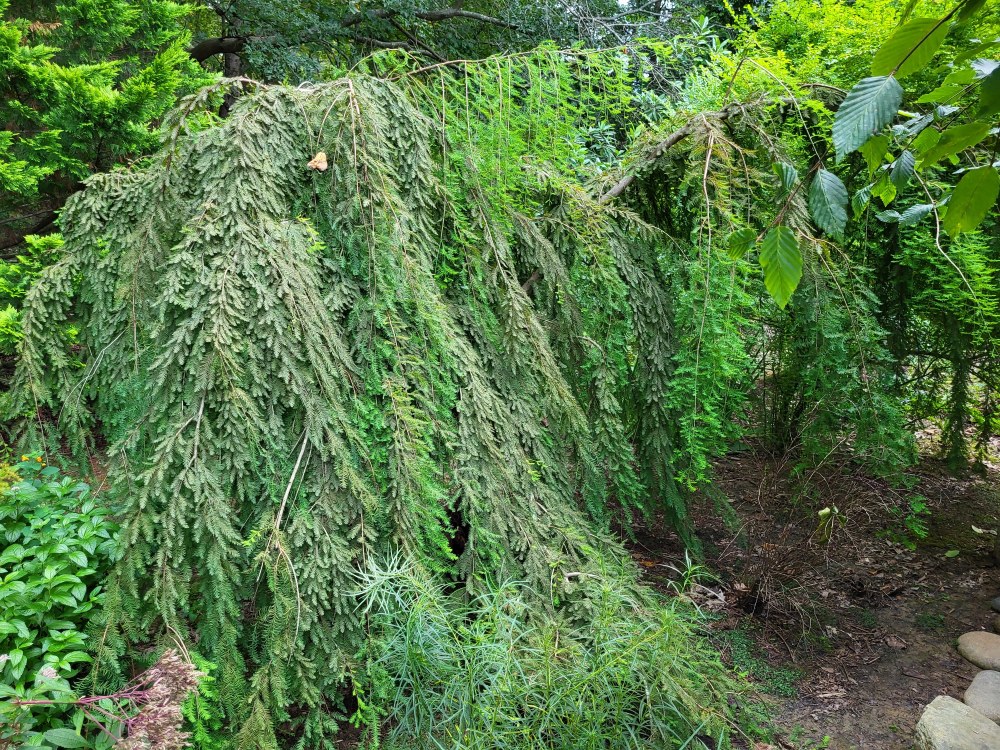
In long established gardens in Oregon I’ve seen weeping cedars and bald cypress trained for considerable distances along chain link fences. I’ve passed the lesson onto one of our sons, whose ‘Falling Waters’ now engulfs his fence. In this garden, I take advantage of ‘Falling Waters’ tolerance of damp soils in the constantly moist soil below the koi pond, and in case a second reference is required to distinguish redwood from cypress, I’ve planted a small ‘Miss Grace’ dawn redwood that will quickly spread to put a stop to the granite stepping stone path that dead ends a few feet beyond.
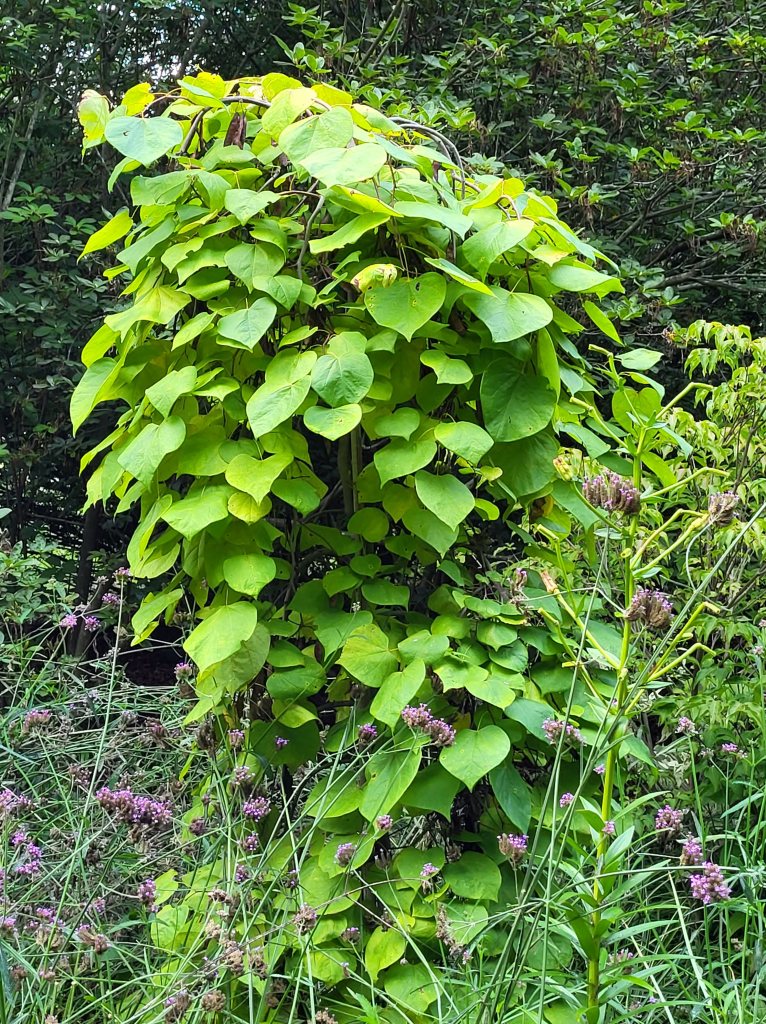
Another, more recent obsession has been the collection of redbuds (Cercis canadensis), with six or eight (who’s counting?) planted in the past two years. Weeping redbuds ‘Golden Falls’ (above), ‘Lavender Twist’, ‘Ruby Falls’, and ‘Whitewater’ (below) have found prominent spaces in this already crowded garden. While upright redbuds grow with a considerable spread, the weeping forms are more narrow, all the better to cram them into a smaller space.
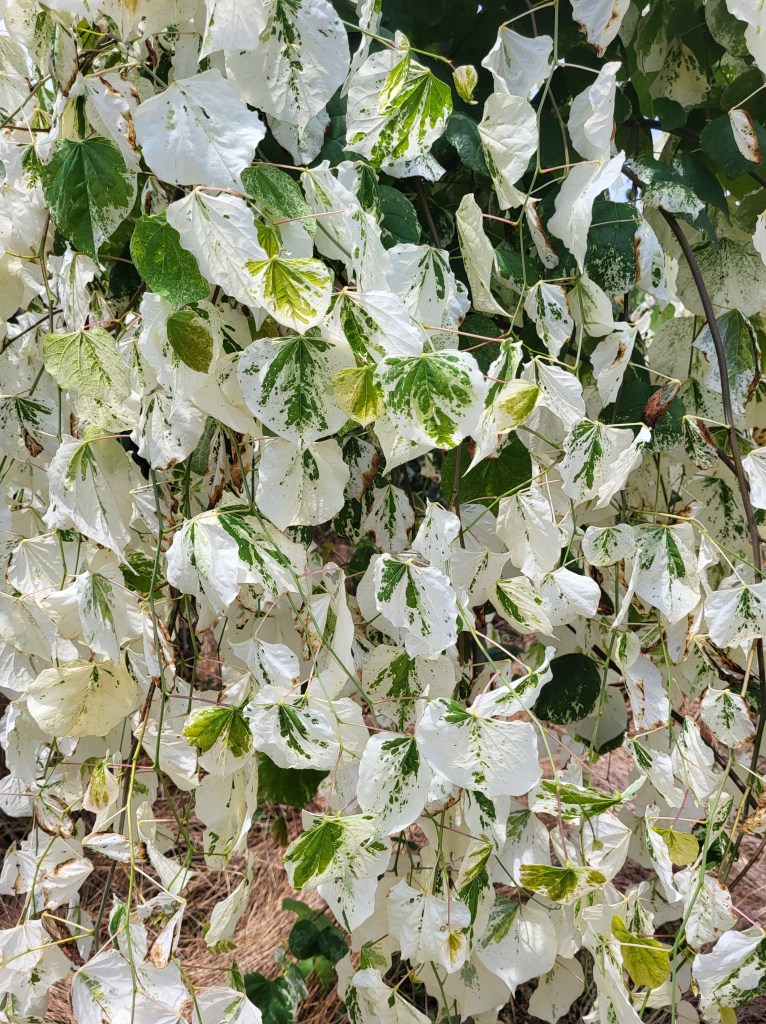
Two weeping trees, the pink flowered weeping cherry (Prunus subhirtella ‘Pendula’), and the weeping hornbeam (Carpinus betula ‘Pendula’, below) consume considerable space with their spread, and while the hornbeam does not flower conspicuously, its characteristic seeds are ornamental and it has been planted so that visitors must stroll through the tunnel beneath its branches to reach the lower, rear garden.
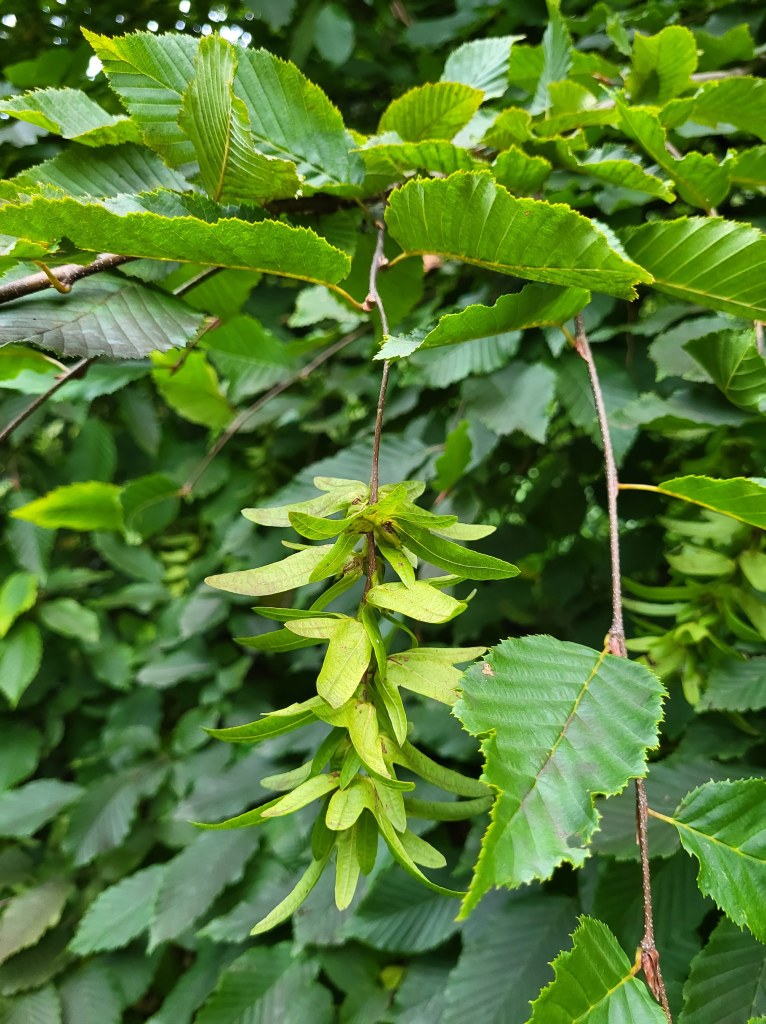
There are two weeping dogwoods in the garden, a pendulous version of our native dogwood that been around for decades, but is lost in a tangle of foliage and hardly noticed. The weeping Chinese dogwood (Cornus kousa ‘Elizabeth Lustgarten’) was planted earlier this year, and I hope it will become a favorite in the lower, rear garden.
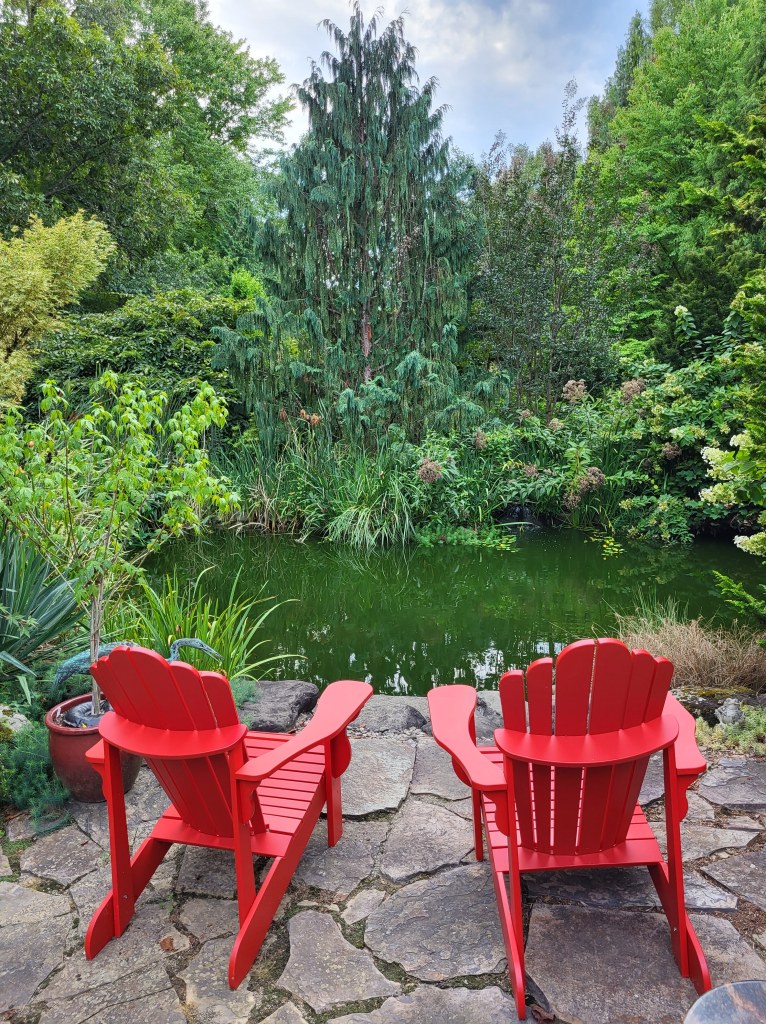
And, to wrap up before this chapter becomes a book, another tall growing evergreen with pendulous branching is the splendid Weeping Alaskan cedar (confusingly, once Cupressus nootkatensis ‘Pendula’, now Callitropsis nootkatensis ‘Pendula’, above and below). One Alaskan cedar was chopped out a few years ago as its health faded as shade increased in the upper, rear garden, but the one in more sunlight beside the koi pond thrives. Interestingly, its small reproductive cones are evident from across the pond, adding a textural contrast to the favorite weeping evergreen.
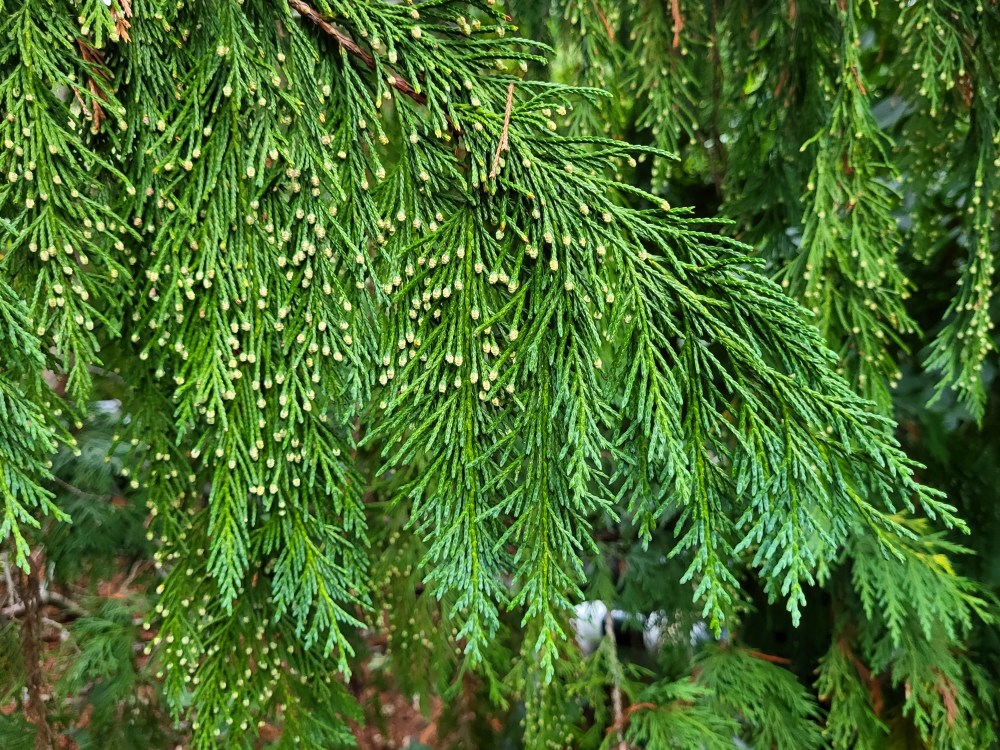
I love your weeping trees! That “Whitewater” redbud is spectacular. I have a few weepers: Japanese maple “Ryusen”; peach tree “Pink Cascade”; a weeping cherry (I think it is “Snow Fountain”). The cherry has been in its sunny location for several years and it has grown well but barely blossoms. Any ideas?
With so many, I missed listing a few including a weeping persimmon that needs a nearby male so it can set fruit, and a few Japanese maples that weren’t counted. One is Ryusen that I’m training upwards, but haven’t decided how tall to take it. Cherries are one of the most dependable trees to flower. Lack of flowers is most likely if the tree is too shaded, but it’s also possible the fertilizing has stimulated growth at the expense of flowers.
I will always have a soft spot for weepers, whether maples, or conifers, or even the soft fall of hakone grass. Great post.
I once planned a weeping and dwarf conifer garden, but long-term plans often go awry when I must have a Japanese maple or redbud, or anything that doesn’t mesh with the design. Oh well, the garden’s become too shady for that, so better that I veered from the plan. While I live the huge purple leafed beech in the front, there is something more appealing about the weeping beech.